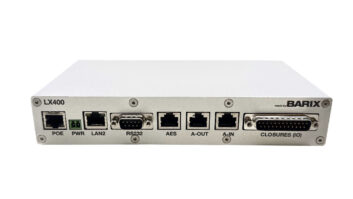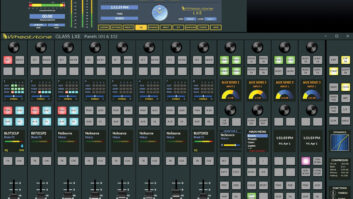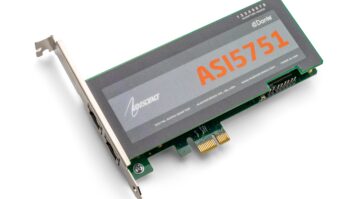Kelly Parker is field support and systems engineer for Wheatstone Corp.

iStockphoto/Andrea Crouse A recent profile in Radio World about a facility project by Clear Channel Portland, Ore. (“Under One Roof At Last In Portland,” July 3), noted the use of fiber. It highlights a trend that we at Wheatstone think is notable because, from where we stand at the edge of the network, there’s nothing about dark fiber that audio over IP can’t handle.
It’s all ones and zeros at this point, so something like a fiber optic STL at the end of a WheatNet-IP Intelligent Network is a matter of routine. Plug a fiber cable into the SFP (small form-factor pluggable) fiber modules at the Gigabit Ethernet switches on each end, and it’s “lights, action, audio.”
In the case of Clear Channel Portland, WheatNet-IP audio into fiber gave the group a broadband STL that is noise-free over long distances and cost about the same as the T1s once used to link its two transmitter sites to the main studio downtown. So instead of four T1s at almost six Mbps being used to link up five FM stations, Clear Channel Portland ran WheatNet-IP audio to the transmitter sites over fiber at one Gbps, resulting in all kinds of new data, like HD channels, HD data and feeds from traffic cams at the Oregon Department of Transportation.
DEDICATED LINK
It’s a good working relationship, WheatNet-IP and dark fiber. Dark fiber is essentially fiber optic cabling that was overbuilt back in the broadband speculation heyday, and is unlit — hence, “dark.”
Many metro areas have dark fiber already trenched in, and telecoms are often willing to lease these lines for not much money. In Clear Channel Portland’s case, dark fiber happened to terminate at the two transmitter sites and was available to its new studios as well at Triangle Pointe.
Because dark fiber is a dedicated link, there’s none of the latency that’s typical of already-lit fiber, which often routes its payload over someone else’s circuit before it gets to its final destination. (Ours is a Gigabit Ethernet AoIP system from one end of the network to the other, then on out to the switches, so there’s no noticeable latency on our end, either.)
There’s no audio bit-rate reduction or coding required, and no audio delay whatsoever. It’s straight linear audio all the way, from full Gigabit Ethernet connectivity throughout the WheatNet-IP’d studio to the Gigabit fiber STL strung across each of the two transmitter sites, both more than 10 miles from the new studio in Triangle Pointe.
Our friends in television have been using fiber for some time now because of the big data payloads that come with TV broadcast. By comparison, the data needs in radio have always been much smaller. But that’s changing. We are talking to more radio broadcasters who are looking for ways to add that extra HD channel or two to their STLs, along with all the data that comes with it.
In Clear Channel Portland’s case, they have the added burden of backhauling video for Clear Channel corporate’s Total Traffic Network division. They are supplying streaming traffic cam video to the group’s radio stations, which requires more broadband than traditional STLs can put out. Even getting an extra STL frequency on the 950 MHz band practically takes an act of Congress these days.
CLEAN BROADBAND
Fiber is a viable option for many broadcasters, and if they have a WheatNet-IP system, that’s even better. Clear Channel Portland has WheatNet-IP Blades (what others compare to IP nodes) at its studio and the same at each of the transmitter sites for fiber connectivity on both ends. The group added another IP Blade at the Rose Garden arena for its Portland Trail Blazers feed, and has a broadband fiber optic connection to the video circuits and camera feeds at the Oregon Department of Transportation for Clear Channel’s Total Traffic Network.
Once Clear Channel Portland began locating audio servers at the transmitter site for HD2 programming, latency became a fairly important consideration. A trial run with lit fiber, for example, resulted in delays up to 30 minutes for booting up the servers due to packet priority issues. Gig for gig, WheatNet-IP and dark fiber are a good match. WheatNet-IP operating on Gigabit Ethernet throughput into dark fiber running out Gbps to the transmitter is a good combination all around.
Since Clear Channel Portland has been running WheatNet-IP into its fiber STL, we’ve seen them make some good use of the technology over the past several years. They’ve been able to patch signals around easily, from one station feed to another in an emergency, and all with transparency. And with the addition of a voice-over-IP telephone system at the new Triangle Point facility, they find the operation just that much more seamless, from starting, stopping or cueing call-in guests straight from voice-over-IP through the WheatNet-IP Intelligent Network and on out to the fiber connection for transport to the transmitter.
Together, our WheatNet-IP network with a fiber STL make a clean broadband system that we expect to see more of as time goes on.
Comment on this or any story. Email[email protected].












